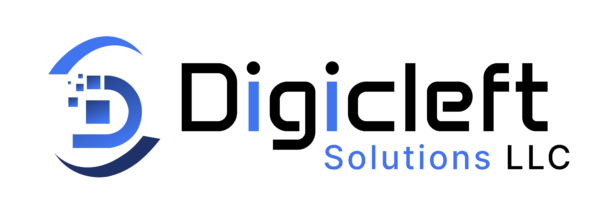
Introduction
Let’s face it — e-commerce is booming, but with growth comes risk. More transactions mean more opportunities for fraudsters to sneak in and steal. Online fraud is a daily nightmare for retailers. It includes fake chargebacks, account hacking, and credit card abuse.
So, what’s the solution? Two words: Artificial Intelligence.
AI isn’t just the future; it’s now — and it’s changing the security game for online businesses. Ready to see how?
Understanding E-Commerce Fraud
➢ Common Types of E-Commerce Fraud
Let’s break down what you’re really up against.
Credit Card Fraud
Classic but deadly. Hackers steal card info and make unauthorized purchases — leaving businesses to deal with the fallout.
Account Takeover (ATO)
Cybercriminals get into a customer’s account by using stolen credentials. Then, they shop freely.
Friendly Fraud (Chargeback Fraud)
Ever had someone buy something, then claim they didn’t and demand a refund from the bank? That’s friendly fraud, and it’s not so friendly.
Fake Returns and Refunds
Scammers exploit return policies, often sending back used or fake items. You lose the product and the money.
➢ The Real Cost
It’s not just about lost revenue. You also risk:
- Damaged reputation
- Declining customer trust
- Higher operational costs
- Payment processor penalties
Traditional Fraud Prevention: Not Cutting It Anymore
Let’s be honest — old-school methods like manual reviews and fixed rule engines can’t keep up.
➢ Rules-Based Systems: Too Rigid
They work on “if-then” logic. If a transaction is over $500 and from a new location, flag it. Sounds good — but what about edge cases? Fraudsters evolve. Rules don’t.
➢ Manual Reviews: Time-Draining
Manually checking suspicious orders slows down your operations, irritates legit customers, and still lets some bad actors slip through.
The Game-Changer: AI in E-Commerce Security
So, what’s different about AI?
It learns. It adapts. It spots subtle fraud patterns that a human (or old system) would miss for E-Commerce.
AI vs. Traditional Security
| Feature | Traditional | AI |
|---|---|---|
| Static Rules | ✅ | ❌ |
| Real-Time Learning | ❌ | ✅ |
| Scalability | ❌ | ✅ |
| Customization | ❌ | ✅ |
Key AI Technologies Powering Fraud Detection
Machine Learning (ML)
ML algorithms sift through mountains of data and find suspicious activity in real-time.
Natural Language Processing (NLP)
Used for detecting fake reviews, suspicious emails, or messages during customer service chats.
Behavioral Biometrics
Tracks how users move their mouse, type, or swipe. If behavior changes, it could be a sign of ATO.
Predictive Analytics
AI can now predict what type of fraud is likely to happen next — and block it before it occurs.
Real-Time Threat Detection with AI
Fraud happens in seconds. You need AI that reacts just as fast.
Example? A user logs in from India, but their purchase history is 100% US-based. AI catches the inconsistency instantly and triggers two-factor authentication. [E-Commerce]
➢ Real-World Success Stories
Amazon
Amazon uses a powerful mix of AI and ML to detect fraudulent accounts and fake reviews. It’s part of why the platform remains relatively scam-free at scale. It is E-Commerce Website.
Shopify
Shopify merchants can use apps like “Signifyd” and “NoFraud.” These AI tools automatically flag risky transactions. They do this without disrupting real ones.
PayPal
PayPal’s adaptive risk detection engine learns from every transaction, blocking fraud with minimal human input.
➢ Personalized Security with AI
AI can tailor security steps based on each customer’s behavior.
Adaptive Authentication
If a customer always shops on Chrome and suddenly logs in from Firefox in Russia — AI increases authentication steps.
Risk-Based Verification
Instead of treating every transaction the same, AI weighs the risk and applies verification only when needed.
➢ Balancing AI and Privacy
Customers want safety and privacy. AI must deliver both.
Smart Data Handling
Modern AI systems anonymize and encrypt personal data during processing. You don’t need to store full identities to stay secure.
Regulatory Compliance
AI tools must follow GDPR, CCPA, and other data laws. The best systems do this out of the box.
➢ Limitations of AI in Fraud Detection
AI isn’t perfect — at least, not yet.
False Positives
Sometimes legit users get flagged. That hurts experience and conversions.
Data Bias
AI is only as good as the data it learns from. Biased or low-quality data can lead to poor decisions.
Cost and Setup Complexity
Enterprise AI solutions can be pricey and take time to integrate. Luckily, newer SaaS tools are making it easier.
What’s Next for AI in E-Commerce Security?
The future is wildly exciting.
Hyper-Personalized Protection
AI will soon provide security unique to each customer — like a digital bodyguard that knows your every move.
AI + Blockchain = Unbreakable?
By combining blockchain transparency with AI’s intelligence, businesses can create a fraud-proof layer of defense.
Self-Evolving AI
Models that learn continuously without human input — imagine security that gets better with every transaction.
How to Get Started with AI in Your Store
Ready to take the plunge?
Step 1: Choose the Right Tool
Go for AI-powered fraud detection tools like:
- Signifyd
- Kount
- Riskified
Step 2: Integrate with Your Systems
Make sure the tool connects with your payment gateways, CRM, and analytics platforms.
Step 3: Train with Quality Data
The more good data it sees, the better it performs.
Step 4: Keep Tweaking
Fraud evolves. So should your AI system.
Conclusion: Smarter Security Starts with AI
In the digital jungle that is e-commerce, AI is your guard dog, watchdog, and detective — all in one.
It watches quietly, learns fast, and reacts instantly. While no system is 100% foolproof, AI gets you as close as possible.
If you want to stay ahead of fraud, it’s not optional anymore — AI is the way forward.
FAQs
1. What type of AI is used to detect e-commerce fraud?
Machine learning, behavioral biometrics, and NLP are common tools used to detect and stop fraud in real-time.
2. Can AI completely eliminate fraud in online stores?
Not entirely, but it can drastically reduce the risk and catch most fraud before it happens.
3. Is AI security affordable for small e-commerce businesses?
Yes. Many tools like Signifyd or NoFraud offer pay-as-you-go plans tailored for small and mid-sized businesses.
4. How does AI protect customer data?
By using encryption, anonymization, and following global privacy regulations like GDPR and CCPA.
5. What’s next for AI in online retail security?
Expect more predictive, personalized, and autonomous systems that evolve in real-time and integrate blockchain for added transparency.


